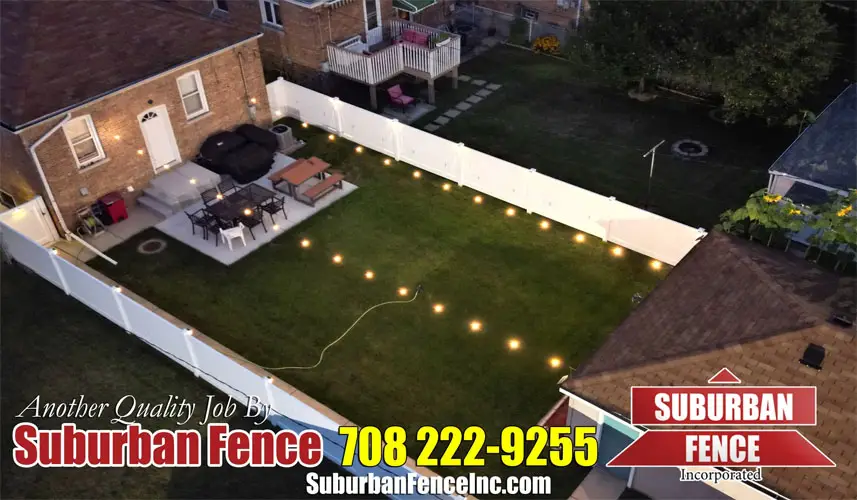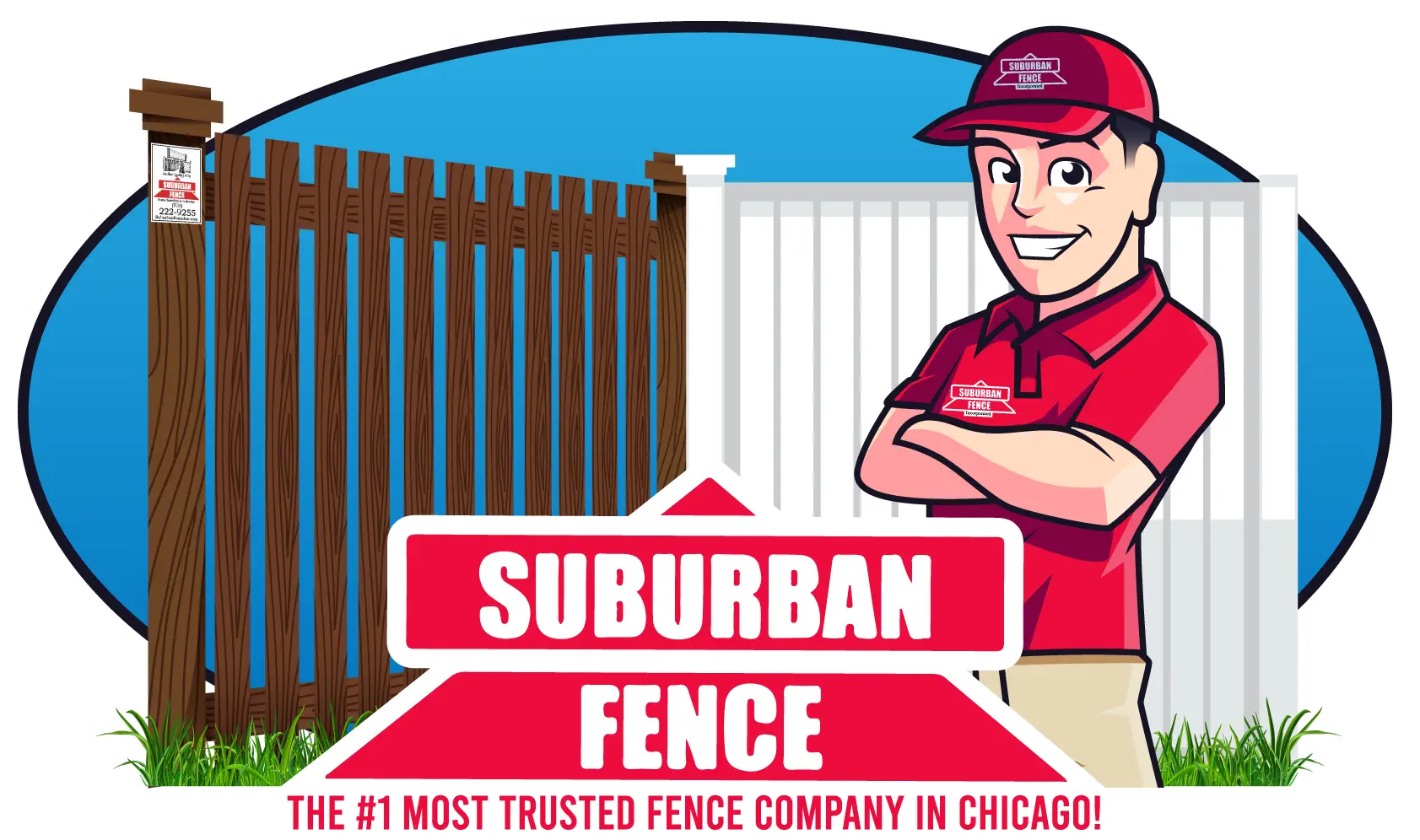
How We Install Custom Vinyl Fencing
Professional Custom Vinyl Fencing Installation: What You Need To Know
A fence isn’t just a barrier—it shapes the look and feel of your outdoor space. Whether you want more privacy, better security, or a fresh update to your yard, a well-installed vinyl fence can make a big impact. But installing a fence correctly takes more than just picking the right materials; it requires careful planning and expert installation to ensure it lasts.
At Suburban Fence, we’ve been providing vinyl fence installation Chicago for over 40 years. Our process focuses on delivering long-lasting results with attention to detail and personalized service. In this guide, we’ll walk you through how we install vinyl fences step by step, showing why our approach guarantees a sturdy, reliable fence built for your needs.
Preparing for Your Custom Vinyl Fencing Installation
Proper preparation is key to a successful vinyl fence installation. At Suburban Fence, we take care of every detail before the actual work begins, ensuring that your installation is smooth, compliant with local regulations, and tailored to your property’s specific needs. From understanding local zoning laws to designing a custom fence that complements your home, we handle the groundwork so you don’t have to.
Checking Local Zoning Laws and Permits
Before we begin any installation, we make sure your fence follows local zoning laws. Every city, town, or neighborhood can have different rules that affect the height, location, and style of your fence. For example, front yard fences are often restricted to a maximum height of 4 feet, while backyard fences can reach up to 6 feet.
As a trusted fence installer Chicago, we handle the entire process of obtaining the necessary permits and ensuring compliance with these rules. This prevents delays, fines, or any changes that could occur after installation if the proper regulations are not followed.
Creating Your Custom Vinyl Fence
We customizes each fence to match your preferences and your property’s layout. Whether you’re looking for privacy, added security, or simply an improvement in your property’s appearance, we have several vinyl fence styles to choose from.
Privacy Fences
Typically between 6 and 8 feet tall, these fences are solid and block views into your yard, offering you full seclusion. Vinyl privacy fences also help reduce noise from nearby streets or neighbors.
Picket Fences
These traditional fences are usually about 3 to 4 feet tall and feature spaced-out vertical slats. They add charm to front yards and are great for defining property lines without creating a solid barrier.
Ranch-Style Fences
Best suited for larger properties or farms, ranch-style fences use horizontal rails instead of vertical slats. They provide a clear boundary without obstructing visibility and offer an open, spacious feel.
We measure your property down to the inch, ensuring that each section of the fence fits perfectly, and we make sure your selected design follows all zoning laws.
Staying Safe: Checking Before We Dig
Before we start digging to install the posts, we perform one of the most critical safety checks: marking underground utilities. Hitting gas, water, or electrical lines can lead to dangerous accidents, service interruptions, and expensive repairs.
We work with 811, the national “Call Before You Dig” service, to mark underground utility lines. This is required by law and ensures that our team knows exactly where it’s safe to dig. On average, utility companies will send out a team to mark your property within 3-5 business days, allowing us to avoid any risks during installation. This step guarantees a safe and hassle-free installation process.

Steps On How To Install Custom Vinyl Fencing
Here’s how we handle each stage of vinyl fence installation to give you peace of mind and a fence you can rely on for years to come.
Step 1: Personalized Consultation and Design
We start every project with a consultation to understand your specific needs. Whether you need more privacy, security, or to improve your property’s appearance, we tailor the design to meet your goals. Our team considers factors like uneven terrain or special access requirements, guiding you through selecting the perfect style, color, and finish for your home.
Step 2: Measuring and Marking the Fence Line
Before we start digging, we measure and clearly mark the fence line using stakes and string. This step ensures the fence follows your property boundaries accurately and prevents any misalignment. Once the perimeter is marked, we double-check the spacing for posts to ensure everything is ready for digging.
Step 3: Digging the Post Holes
The depth of each post hole is crucial for the stability of your fence. Generally, the hole should be one-third the height of the post, which helps anchor it securely. We use professional tools like augers or post hole diggers to ensure precision, and we add a layer of gravel at the bottom of each hole to improve drainage.
Step 4: Setting and Aligning the Posts
After the holes are prepared, we insert the vinyl posts and check that they are level and properly aligned. It’s important that the posts are not just straight but also securely positioned to avoid any shifting over time. At this stage, we double-check the alignment of the entire fence before moving on to the next step.
Step 5: Securing the Posts with Concrete
To ensure long-lasting stability, we secure each post with concrete. The concrete provides a firm foundation, preventing the posts from moving, especially during windy conditions. We ensure the concrete is shaped in a way that allows water to drain away from the posts, protecting them from long-term damage.
Step 6: Measuring and Adjusting Fence Panels
We carefully measure the distance between each post before installing the panels. This ensures the panels fit snugly, without gaps or overhanging sections. If necessary, we cut the panels to the exact size to match the spacing between the posts, ensuring a clean, professional finish.
Step 7: Installing Rails and Panels
Once the posts are secure, we begin attaching the vinyl fence panels and bottom rails. Each component is carefully aligned, and we use durable connectors or screws to hold everything in place. At this stage, we make sure the fence is level and that the panels are firmly attached to withstand daily wear and tear.
Step 8: Final Touches – Top Rails, Gates, and Caps
To finish the installation, we add the top rails, which enhance both the strength and appearance of the fence. If your fence includes a gate, we install it using quality hardware to ensure smooth operation. Lastly, we place caps on top of each post for a polished look and to protect them from weather damage.
Installation Tips For Long-Lasting Custom Vinyl Fencing
A few key technical details can significantly improve its longevity and stability when installing custom vinyl fencing Chicago. These tips will help ensure your fence remains strong and looks great for many years.
Leave Space for Expansion and Contraction
Vinyl is a material that expands in heat and contracts in cold. If you install the panels too tightly, they might buckle or crack when the temperature changes. To avoid this, leave a small gap (about 1/4 inch) between each panel. This space allows the vinyl to move naturally without damaging the structure. Proper spacing is especially important in areas like Chicago, where temperatures can range from hot summers to freezing winters.
Install Corner Posts First
The corner posts are the foundation for the entire fence structure. By installing these posts first, you ensure that the rest of the fence lines up properly. Make sure these posts are deep enough—typically about 2 feet or 1/3 of the post height—to provide extra support. For example, if you’re installing a 6-foot fence, the corner posts should be set in 2-foot-deep holes for maximum stability. This step prevents the posts from shifting over time, especially during extreme weather conditions like heavy winds.
Use a Level for Accuracy
A level is one of the most important tools for Vinyl fence installation Chicago. You need to check both the posts and the panels at every stage of installation to make sure everything is straight and aligned. Even slight tilts can weaken the fence or make it look uneven. Using a level throughout the process helps ensure the fence can withstand pressure and keeps it looking professional.
Add Gravel for Drainage
Adding 6 inches of gravel at the bottom of each post hole before pouring concrete is crucial. This layer of gravel prevents water from pooling around the posts, which can cause long-term damage to the foundation. Water buildup can weaken the concrete over time, especially in areas prone to heavy rainfall or snow. Good drainage is essential for ensuring your fence stays stable and lasts longer.
Choose Concrete for Strong Support
Setting your vinyl posts in concrete provides much-needed strength, especially in areas with high winds or shifting soil. Vinyl posts are lighter than wood or metal, so they need the extra support to stay in place. Concrete also prevents the posts from leaning or sagging over time. Make sure the concrete is poured to about 6 inches below ground level, which allows space to cover it with soil or grass for a cleaner look.
Take the Next Step with Suburban Fence’s Expert Custom Vinyl Fencing Installation
Now that you know what’s involved and how to install a vinyl fence, it’s clear that the process benefits from professional experience and care. At Suburban Fence, we manage each step carefully, from measuring your property to securing the fence posts. Our team ensures that your fence is built to last and hold up in Chicago’s weather.
Whether you need a fence for privacy, security, or to improve the look of your property, we’re here to help. With over 40 years of experience, we are the top choice for custom vinyl fencing Chicago.

 Powered by
Powered by